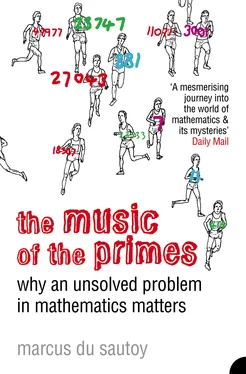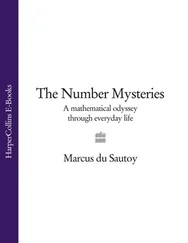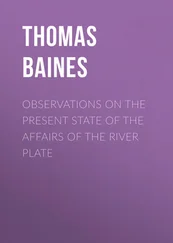It’s likely that the twins were using a trick based on what’s called Fermat’s Little Theorem to test whether a number is prime. The test is similar to the way in which autistic-savants can quickly identify that April 13, 1922, for instance, was a Thursday – a feat the twins performed regularly on TV chat shows. Both tricks depend on doing something called clock or modular arithmetic. Even if they lacked a magic formula for the primes, their skill was still extraordinary. Before they were separated they had reached twenty-digit numbers, well beyond the upper limit of Sacks’s prime number tables.
Like Sagan’s heroine listening to the cosmic prime number beat and Sacks eavesdropping on the prime number twins, mathematicians for centuries had been straining to hear some order in this noise. Like Western ears listening to the music of the East, nothing seemed to make sense. Then, in the middle of the nineteenth century, came a major breakthrough. Bernhard Riemann began to look at the problem in a completely new way. From his new perspective, he began to understand something of the pattern responsible for the chaos of the primes. Underlying the outward noise of the primes was a subtle and unexpected harmony. Despite this great step forward, this new music kept many of its secrets out of earshot. Riemann, the Wagner of the mathematical world, was undaunted. He made a bold prediction about the mysterious music that he had discovered. This prediction is what has become known as the Riemann Hypothesis. Whoever proves that Riemann’s intuition about the nature of this music was right will have explained why the primes give such a convincing impression of randomness.
Riemann’s insight followed his discovery of a mathematical looking-glass through which he could gaze at the primes. Alice’s world was turned upside down when she stepped through her looking-glass. In contrast, in the strange mathematical world beyond Riemann’s glass, the chaos of the primes seemed to be transformed into an ordered pattern as strong as any mathematician could hope for. He conjectured that this order would be maintained however far one stared into the never-ending world beyond the glass. His prediction of an inner harmony on the far side of the mirror would explain why outwardly the primes look so chaotic. The metamorphosis provided by Riemann’s mirror, where chaos turns to order, is one which most mathematicians find almost miraculous. The challenge that Riemann left the mathematical world was to prove that the order he thought he could discern was really there.
Bombieri’s email of April 7, 1997, promised the beginning of a new era. Riemann’s vision had not been a mirage. The Mathematical Aristocrat had offered mathematicians the tantalising possibility of an explanation for the apparent chaos in the primes. Mathematicians were keen to loot the many other treasures they knew should be unearthed by the solution to this great problem.
A solution of the Riemann Hypothesis will have huge implications for many other mathematical problems. Prime numbers are so fundamental to the working mathematician that any breakthrough in understanding their nature will have a massive impact. The Riemann Hypothesis seems unavoidable as a problem. As mathematicians navigate their way across the mathematical terrain, it is as though all paths will necessarily lead at some point to the same awesome vista of the Riemann Hypothesis.
Many people have compared the Riemann Hypothesis to climbing Mount Everest. The longer it remains unclimbed, the more we want to conquer it. And the mathematician who finally scales Mount Riemann will certainly be remembered longer than Edmund Hillary. The conquest of Everest is marvelled at not because the top is a particularly exciting place to be, but because of the challenge it poses. In this respect the Riemann Hypothesis differs significantly from the ascent of the world’s tallest peak. Riemann’s peak is a place we all want to sit upon because we already know the vistas that will open up to us should we make it to the top. The person who proves the Riemann Hypothesis will have made it possible to fill in the missing gaps in thousands of theorems that rely on it being true. Many mathematicians have simply had to assume the truth of the Hypothesis in reaching their own goals.
The dependence of so many results on Riemann’s challenge is why mathematicians refer to it as a hypothesis rather than a conjecture. The word ‘hypothesis’ has the much stronger connotation of a necessary assumption that a mathematician makes in order to build a theory. ‘Conjecture’, in contrast, represents simply a prediction of how mathematicians believe their world behaves. Many have had to accept their inability to solve Riemann’s riddle and have simply adopted his prediction as a working hypothesis. If someone can turn the hypothesis into a theorem, all those unproven results would be validated.
By appealing to the Riemann Hypothesis, mathematicians are staking their reputations on the hope that one day someone will prove that Riemann’s intuition was correct. Some go further than just adopting it as a working hypothesis. Bombieri regards it as an article of faith that the primes behave as Riemann’s Hypothesis predicts. It has become virtually a cornerstone in the pursuit of mathematical truth. If, however, the Riemann Hypothesis turns out to be false, it will completely destroy the faith we have in our intuition to sniff out the way things work. So convinced have we become that Riemann was right that the alternative will require a radical revision of our view of the mathematical world. In particular, all the results that we believe exist beyond Riemann’s peak would disappear in a puff of smoke.
Most significantly, a proof of the Riemann Hypothesis would mean that mathematicians could use a very fast procedure guaranteed to locate a prime number with, say, a hundred digits or any other number of digits you care to choose. You might legitimately ask, ‘So what?’ Unless you are a mathematician such a result looks unlikely to have a major impact on your life.
Finding hundred-digit primes sounds as pointless as counting angels on a pinhead. Although most people recognise that mathematics underlies the construction of an aeroplane or the development of electronics technology, few would expect the esoteric world of prime numbers to have much impact on their lives. Indeed, even in the 1940s G.H. Hardy was of the same mind: ‘both Gauss and lesser mathematicians may be justified in rejoicing that here is one science [number theory] at any rate whose very remoteness from ordinary human activities should keep it gentle and clean’.
But a more recent turn of events has seen prime numbers take centre stage in the rough and dirty world of commerce. No longer are prime numbers confined to the mathematical citadel. In the 1970s, three scientists, Ron Rivest, Adi Shamir and Leonard Adleman, turned the pursuit of prime numbers from a casual game played in the ivory towers of academia into a serious business application. By exploiting a discovery made by Pierre de Fermat in the seventeenth century, these three found a way to use the primes to protect our credit card numbers as they travel through the electronic shopping malls of the global marketplace. When the idea was first proposed in the 1970s, no one had any idea how big e-business would turn out to be. But today, without the power of prime numbers there is no way this business could exist. Every time you place an order on a website, your computer is using the security provided by the existence of prime numbers with a hundred digits. The system is called RSA after its three inventors. So far, over a million primes have already been put to use to protect the world of electronic commerce.
Every business trading on the Internet therefore depends on prime numbers with a hundred digits to keep their business transactions secure. The expanding role of the Internet will ultimately lead to each of us being uniquely identified by our very own prime numbers. Suddenly there is a commercial interest in knowing how a proof of the Riemann Hypothesis might help in understanding how primes are distributed throughout the universe of numbers.
Читать дальше












